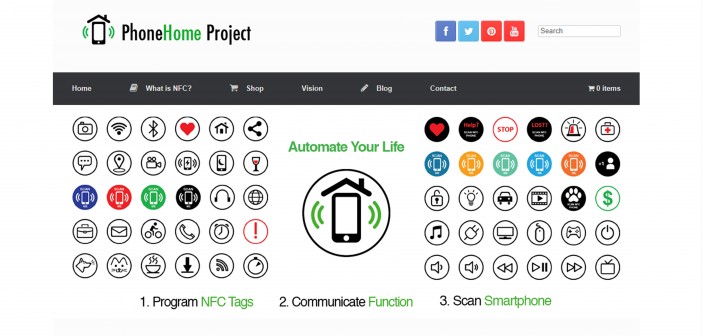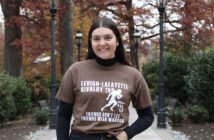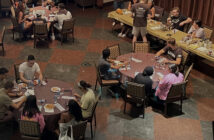The PhoneHome Project NFC Solutions was founded by Brian Hruza, ’14, to create a connection between digital and physical spaces through the use of near field communication technology.
The project is a Lehigh student start-up running its second Kickstarter campaign.
NFC technology is similar to QR codes but instead of scanning a code, Hruza explained that NFC technology incorporates small tags programmed with different commands. He said if one waves the tag near their Android, Windows phone or Blackberry, it will perform the action on the phone that it’s been programmed to do.
“The applications are so limitless,” Hruza said of the many uses of NFC technology. “People don’t know what to do with them because you could do anything with them.”
Hruza founded his first NFC Kickstarter, which was focused on providing consumers with digital resources instantly through NFC business cards that use NFC tags. This way, someone could transfer all their contact business information easily from one person to another through their phone by using the tag. He also has one that’s attached to his car keys which starts up music and Bluetooth in his car when he gets in.
Hruza said he worked with a blind man in Nebraska who uses NFC tags to aid him in taking his medication. This allows the man to identify if a medication is Advil and not bleach, for example. Another application is simply to connect someone’s phone to the Wi-Fi in a space instantly with one of the tags.
Hruza said he was able to do all this through his involvement with the Lehigh Mountaintop Program last summer and the two independent study courses he took with his mentor, professor Marilyn Jones of the Lehigh art and design department. He also utilized skills and resources from his student job at the Lehigh Digital Media Studio.
There is a huge market in NFC tags among the disabled because of the accessibility the tags create. Museums have started to look into the use of NFC tags, and in particular the Lehigh University Art Galleries have started an initiative to make audio descriptions of pieces to create a better experience for the visually impaired. Hruza said if a blind person cannot see a painting, a YouTube link using an NFC tag could be programmed to play for them.
“It’s about creating an audio experience for people who are sight impaired,” said Steve Lichak, the senior media production specialist for the Digital Media Studio.
Denise Stangl, Patricia McAndrew and Delia Chatlani who work for the art galleries have been working with Hruza, Lichak and others. Stangl, McAndrew and Chatlani attended a workshop on “accessible art,” in preparation for this effort. Currently, they are working on their first audio description of a Steve Tobin piece that is on display in the lower gallery. Stangl was responsible for analyzing what it looks like and describing what it looks like without imposing her own interpretation of the piece.
“One out of seven people are disabled in some way, and 81,000 people in the Lehigh Valley have a disability,” McAndrew said, expressing the importance of increased accessibility in art galleries.
NFC tags are on the rise and are headed toward the mass market in the future.
Lichak said NFC tags are at the forefront of new technology and are a great opportunity for Hruza and for museums as they try to become more accessible for the disabled. The NFC capability is not yet functional on Apple products, but Hruza estimates it will be in about a year.






Comment policy
Comments posted to The Brown and White website are reviewed by a moderator before being approved. Incendiary speech or harassing language, including comments targeted at individuals, may be deemed unacceptable and not published. Spam and other soliciting will also be declined.
The Brown and White also reserves the right to not publish entirely anonymous comments.